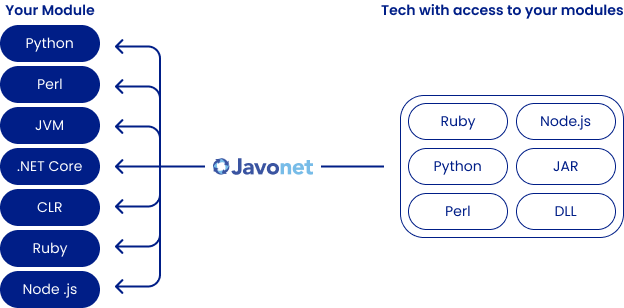UNLOAD YOUR SUPPORT:
Javonet can help businesses reduce the need for specialized support during maintenance periods.
Since Javonet does not require custom coding of integration pieces, there is no need to maintain
and keep other teams on alert. This
means that only specialists of your chosen technology are needed during maintenance periods,
reducing the need for additional
support and streamlining the maintenance process.
MAKES YOUR USERS HAPPIER:
Javonet can help make your users happier by providing a seamless integration experience.
With Javonet, there is no need for extra configuration or support requests related to integration
with external modules. The simple
single package delivery and proven reliable connection by design reduce the risk of runtime errors
or issues, resulting in a more
stable and reliable integration process.
BECOME MORE FLEXIBLE:
With Javonet, making changes to external modules or upgrading them to newer versions is much
easier, thanks to the absence of extra
middle-layers. This means that businesses have a single point of change, and only on one side,
simplifying the process and reducing
the risk of potential errors or issues.



































